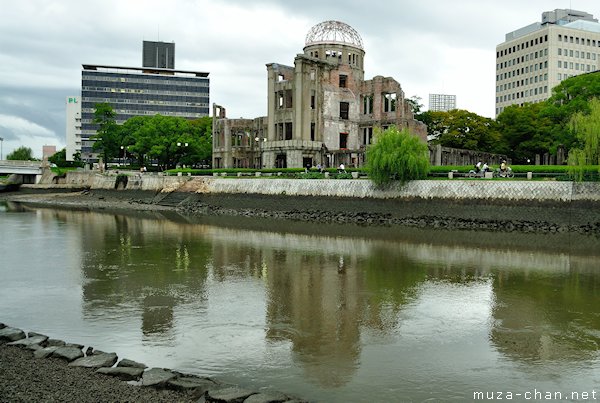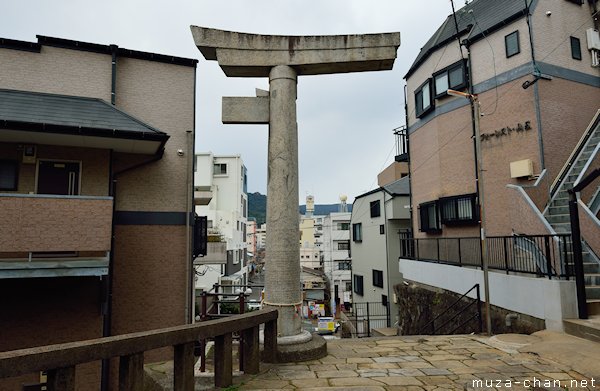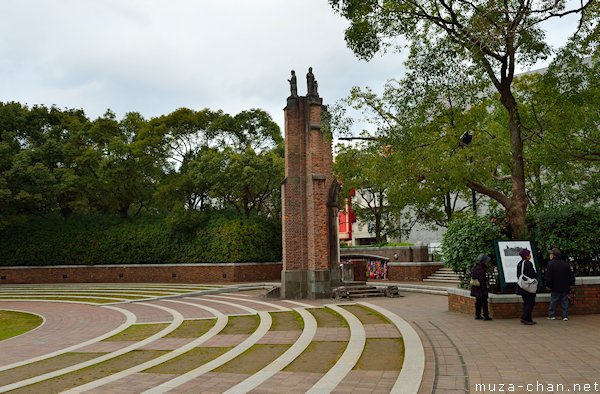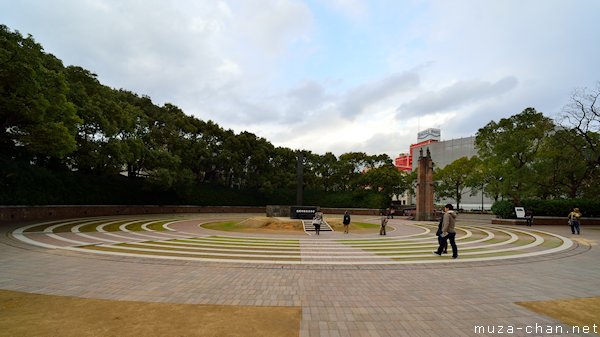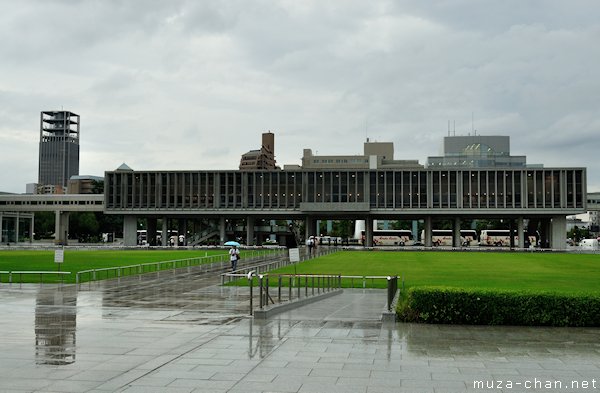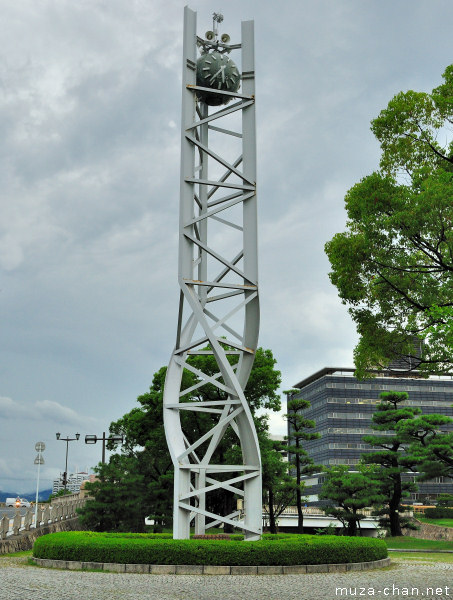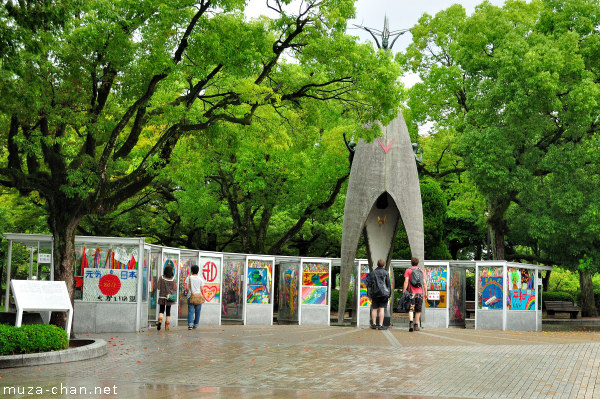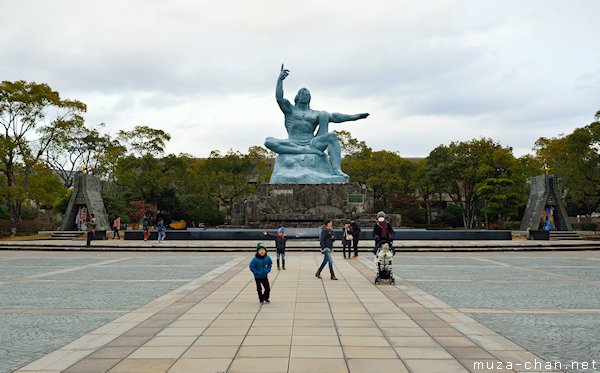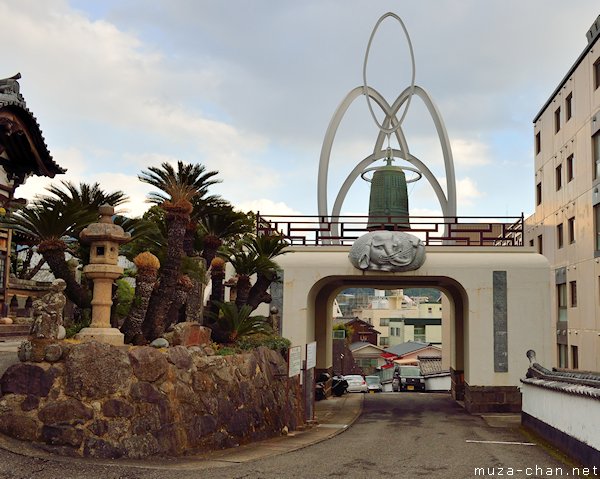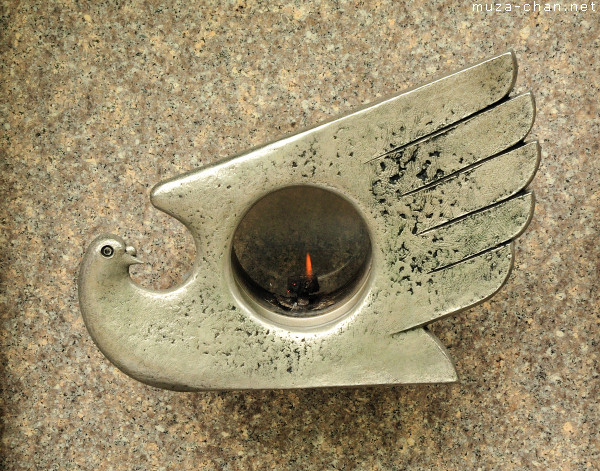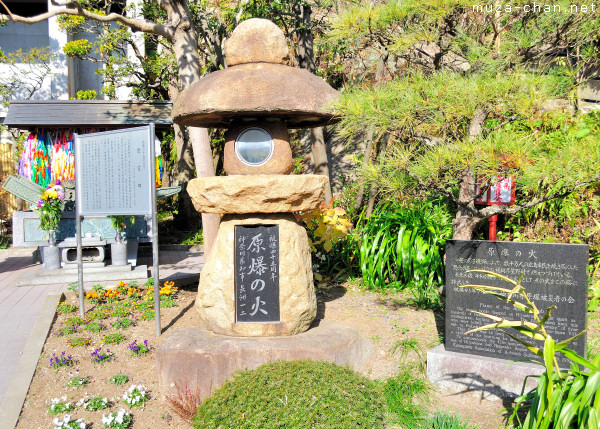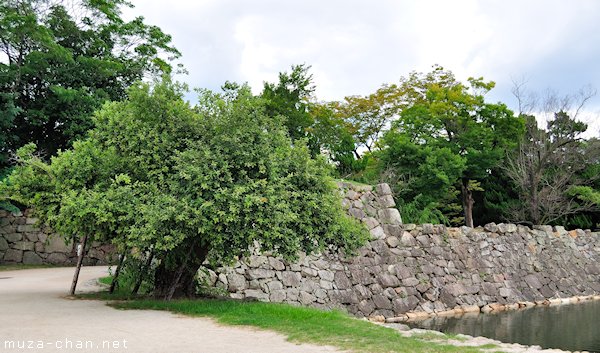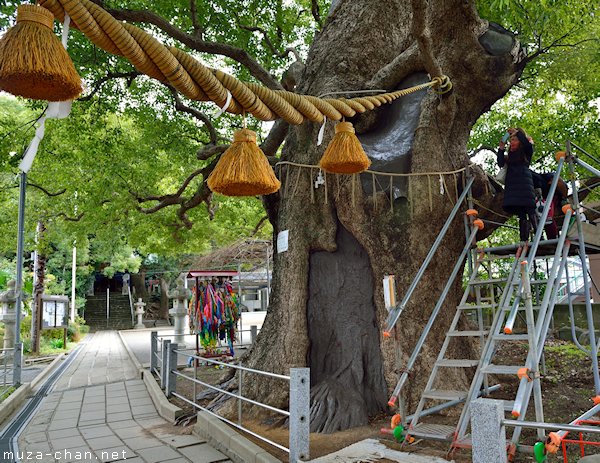When we talk about Hiroshima or Nagasaki, the atomic bombing is one of the first things that come to mind… This year, we commemorate 70 years since, on August 6, 1945, the first atomic bomb utterly destroyed Hiroshima, and Nagasaki suffered the same fate only three days later.
Ever since I first set foot on Japan, I wanted to visit the two cities and to pray for peace at their memorial sites. And over time, I managed to travel to all the notable locations, to discover a few other lesser known sites, and to learn several deeply moving stories from that dreadful period…
Today, on the day that marks the 70th anniversary of the atomic explosion, I compiled a list of the locations and stories that impressed me most. There are historical sites and museums, preserved ruins and several other monuments that I cannot look at without feeling tears well up in my eyes… And last but not least, there are the living monuments, the holly survivor trees, silent witnesses of a horrific event that should never repeat…
1. Preserved ruins
1.1. The Hiroshima A-Bomb Dome, Genbaku Dōmu
Inaugurated in 1915, the Hiroshima Prefectural Commercial Exhibition was a landmark of the city, built to promote industrial production. Nobody would have imagined the tragic destiny of this building…
It is called now Genbaku Dōmu 原爆ドーム, meaning Atomic Bomb Dome, and in 1966 a decision has been made to preserve it as a memorial for the people who died, and as a symbol of hope, so that something like this will never happen again.
The survival of this construction was actually due to a targeting error… If the bomb would have reached its target, the nearby Aioi Bridge, the Dome would have been completely destroyed by the shock wave, like the rest of the surrounding buildings. But the bomb exploded almost right above the Dome and part of the walls and the metallic frame remained standing.
In 1996 the Hiroshima A-Bomb Dome was designated a UNESCO World Heritage Site.
1.2. The Nagasaki One-legged Torii of the Sanno Shrine
On August 9, 1945, the Nagasaki Sanno Shrine, only 800 meters away from the Ground Zero, was shattered by the explosion shock wave, yet half of its stone torii gate miraculously remained standing. One of the columns was knocked down and the remaining one was rotated in its base about 30 degrees…
1.3. The Nagasaki Urakami Cathedral wall remnant
Located just 500 meters away from the Ground Zero, the Urakami Cathedral was destroyed almost completely, just a small part of the southern wall remained standing. The Urakami Cathedral was rebuilt in 1958, and the preserved wall was reinforced and moved next to the Ground Zero monument.
2. Historical sites and Museums
2.1. The Hiroshima Ground Zero Monument
The Ground Zero in Hiroshima is the Km.0 of suffering… but it passes almost unnoticed by the thousands of tourists visiting the Hiroshima Peace Memorial. I searched for it and I found it on a small street close to the Genbaku Dome, modestly marked by the brown stone marker on the left of the photo.
The “ground zero” term originates from the US Army, defined shortly after the war as the ground point directly beneath the explosion. The actual bombing target in Hiroshima was the Aioi Bridge, but the bomb exploded here, some hundred meters away from the bridge.
2.2. The Nagasaki Ground Zero Monument and the Hypocenter Cenotaph
Just three days after the first atomic bomb exploded over Hiroshima, a second bomb exploded over Nagasaki, destroying a third of the city’s area, killing instantly 74,000 people and severely wounding other 75,000…
The Ground Zero of the explosion is marked today by the Hypocenter Cenotaph, the black monolith in the middle of the photo. The surrounding area is a beautiful but incredibly sad park, and as written on the monument plaque, it stands as “a symbol of the aspiration for world harmony".
2.3. The Hiroshima Peace Memorial Museum
The Peace Memorial Museum in Hiroshima was inaugurated ten years after the war. Designed by the famous architect Kenzo Tange, the building, built on pillars, symbolizes the human power to rise from the ashes…
2.4. The Hiroshima Cenotaph for the A-bomb Victims
Among the more than 50 monuments located inside the Hiroshima Peace Memorial Park, the most important is the Cenotaph for the A-bomb Victims, an arch-shaped shelter designed by the Japanese architect Kenzo Tange. The monument represents a shelter for the souls of the victims and holds inside a stone chest containing 77 volumes with the names of all those who died immediately and in the aftermath of the nuclear explosion: 221,893 persons. As the inscription says:
安らかに眠って下さい 過ちは 繰返しませぬから
Let all the souls here rest in peace, for we shall not repeat the evil.
2.5. The Hiroshima Peace Clock Tower
Marking the time of the nuclear explosion, the chime of the Peace Clock Tower can be heard in the Hiroshima Peace Memorial Park every day at precisely 8:15. In 1996, its sound was selected as one of the 100 Soundscapes of Japan.
Located nearby the A-Bomb Dome, the Peace Clock is a 20 meters tall tower designed by Shoji Ohata and built in 1967 by the Hiroshima Rijo Lions Club. Made from three twisted iron pillars, the tower symbolizes the hands of the Hiroshima citizens, united in prayer for endless peace. The hands are holding a 2 meters-diameter clock symbolizing the people of the world…
2.6. The Hiroshima Children’s Peace Monument
70 years ago, Sadako Sasaki was only two years old when she survived the atomic blast, although she was thrown by the blast wave from the window of her home. Unfortunately, 9 years later she became ill with leukemia because of the exposure to radiations…
While in hospital, a friend folded for her an origami crane from a golden piece of paper and, according to a traditional belief that the cranes will grant an important wish to any person who will fold 1000 origami cranes (Senbazuru), Sadako started folding cranes, wishing simply to live…
It is said that she made only 644 cranes until she became too weak to fold… After her death, her friends completed the 1000 origami and she was buried with them. She was only 12 years old.
Her friends and school colleagues raised funds for a monument dedicated to all the children who died because of the atomic bomb and with the help of 3,100 schools from Japan and from 9 other countries, the Children’s Peace Monument from Hiroshima was inaugurated in 1958 on May 5th, on the Children’s Day celebration.
Afterwards, many people began visiting the monument, leaving here paper cranes with wishes for world peace. Today, the glass boxes you see around the monument are filled with paper cranes folded by people all around the world…
2.7. The Hiroshima Bell of Peace
The Bell of Peace is a modern take on the traditional bell tower, with a dome-shaped roof representing the universe, supported by four pillars. The bell was made by a well known bell-caster, Masahiko Katori, and its sound was selected in 1996 for the Environment Agency list of One Hundred Sounds the Japanese People Wish to Preserve.
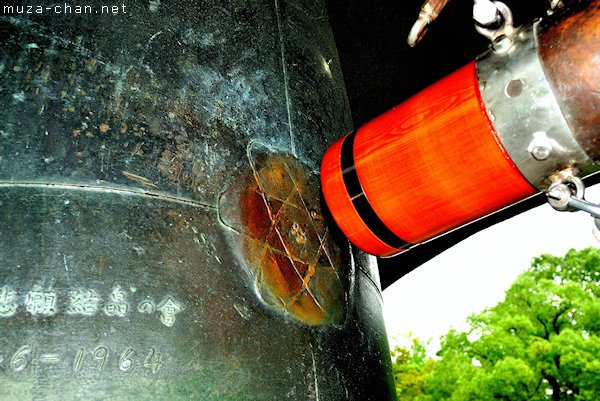
The place where the bell is hit by the hammer represents the symbol of the atom, expressing hope for the abolition of all the nuclear bombs.
2.8. The Nagasaki Fountain of Peace
In Nagasaki, on the place where the atomic bomb was dropped, there is now a Peace Park, a beautiful and somber place filled with monuments, symbols of peace and shrines, each of them with its own sad story.
One of the most shattering stories is the story of the Fountain of Peace. Its shape suggests the wings of a peace dove and the water is an offering for the souls of the victims, inspired by the diary of Sachiko Yamaguchi, a 9 years old girl who experienced the bombing, suffered radiation burns and described the horrendous experience:
I was thirsty beyond endurance. There was something oily on the surface of the water, but I wanted water so badly that I drank it just as it was.
2.9. The Nagasaki Peace Statue
The most important monument inside the Nagasaki Peace Park is the Peace Statue. It is literally filled with symbols: the right hand warns about the nuclear weapons, while the left hand symbolizes eternal peace. The legs are in a Buddhist meditation position, yet, at the same time, are suggesting initiative to stand up and rescue the people of the world. The facial expression is of serenity and peace, and the closed eyes are a prayer for the souls of the dead…
2.10. The Nagasaki Fukusai-ji bell tower
The bell tower of the Fukusai-ji Temple in Nagasaki rings every day at 11:02, the time when the atomic bomb was dropped over Nagasaki in 1945.
3. The Hiroshima and Nagasaki Flame
3.1. The Hiroshima and Nagasaki Flame, Toshogu Shrine, Ueno, Tokyo
On August 6th, 1945, when the bomb exploded, Tatsuo Yamamoto was in a train near Hiroshima, on his way to a military base. His uncle was running a bookstore on the Hondōri street (in the center of Hiroshima), so Tatsuo went there, looking for his uncle… But he found the house destroyed and a flame was still burning… With that flame, he lit a portable warmer and took it home, in the Hoshino-mura village from Fukuoka.
Tatsuo Yamamoto kept the flame burning inside the family shrine and in a kamado (a traditional Japanese stove) until 1968, when the existence of the flame became public and the flame was transferred inside a monument.
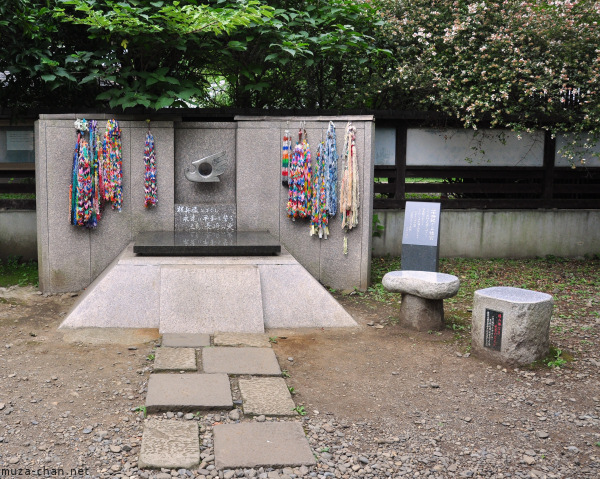
In 1988 the flame was mixed with a flame produced by friction from remains of the Nagasaki bombing and it was placed in a monument constructed at Toshogu Shrine in Ueno, Tokyo, where it is still burning today…
3.2. The Flame of the Atomic Bomb, Ofuna Kannonji, Ofuna
The flame brought by Tatsuo Yamamoto was taken to 14 places in Japan. In Ofuna, nearby the great Kannon statue, there’s a flame lit inside a beautiful but somber stone lantern, installed in 1990 by the Kanagawa Association of A-bomb Sufferers.
4. Hibaku Jumoku, the atomic bombing survivor trees
About 50 trees located inside an area between a few hundred meters and two kilometers from the Ground Zero, miraculously survived the atomic bombing of Hiroshima and Nagasaki. These trees are known today as hibaku jumoku, atomic bombing survivor trees. Here are several of them:
4.1. Hiroshima A-bombed eucalyptus
This Giant Eucalyptus is located just 740 meters away from the explosion hypocenter, near the Main Gate of the Hiroshima Castle. It was planted at the beginning of the 20th century and it has an amazing strength: a typhoon from 1971 tore it at 2.5 meters above the ground, but it managed to grow again…
4.2. Hiroshima A-bombed willow tree
Not far from the Giant Eucalyptus, near the Main Gate of the Hiroshima Castle, 770 meters away from the Ground Zero, there’s a willow tree (maruba-yanagi in Japanese) whose trunk was broken by the explosion. After a while, a few buds appeared and since great care was taken to ensure its survival, a new crown grew and, as you can see in the photo, it still looks green and healthy…
4.3. Nagasaki A-bombed camphor tree, Sanno Shrine
The most impressive and best known hibaku jumoku in Nagasaki are the two camphor trees of the Sanno Shrine, located only 800 meters away from the explosion hypocenter. These amazing trees, although completely burned by the explosion, survived somehow as a favorable omen for the future of the city and as a living prayer for peace…
4.4. Hiroshima A-bombed kurogane tree, Hiroshima Castle
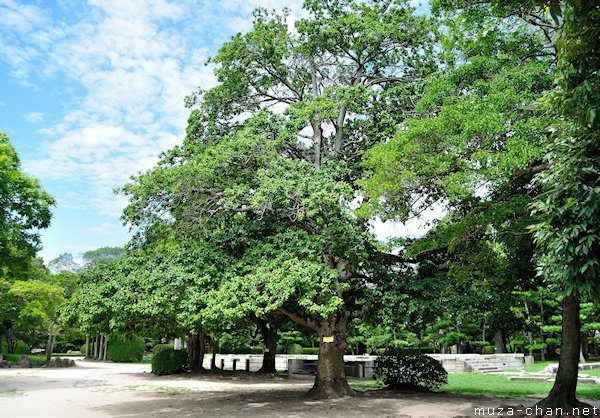
Close to the Hiroshima Castle, 910 meters away from Ground Zero, there are three Kurogane hollies ("Ilex rotunda"). In 1945, they were in front of the Imperial Headquarters, a building completely destroyed by the explosion.
4.5. Hiroshima A-bombed palm tree, Shukkeien Garden
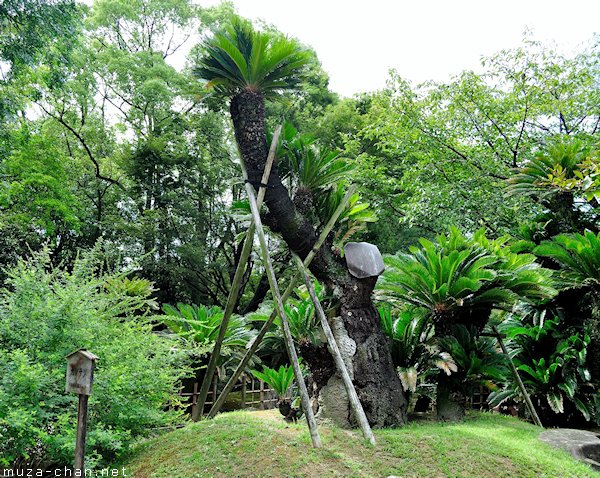
Located in the middle of the Shukkeien Garden, this 300 years old giant palm tree was 1370 meters away from the hypocenter. Carefully cared for, it is still green and strong, a living monument for peace…
